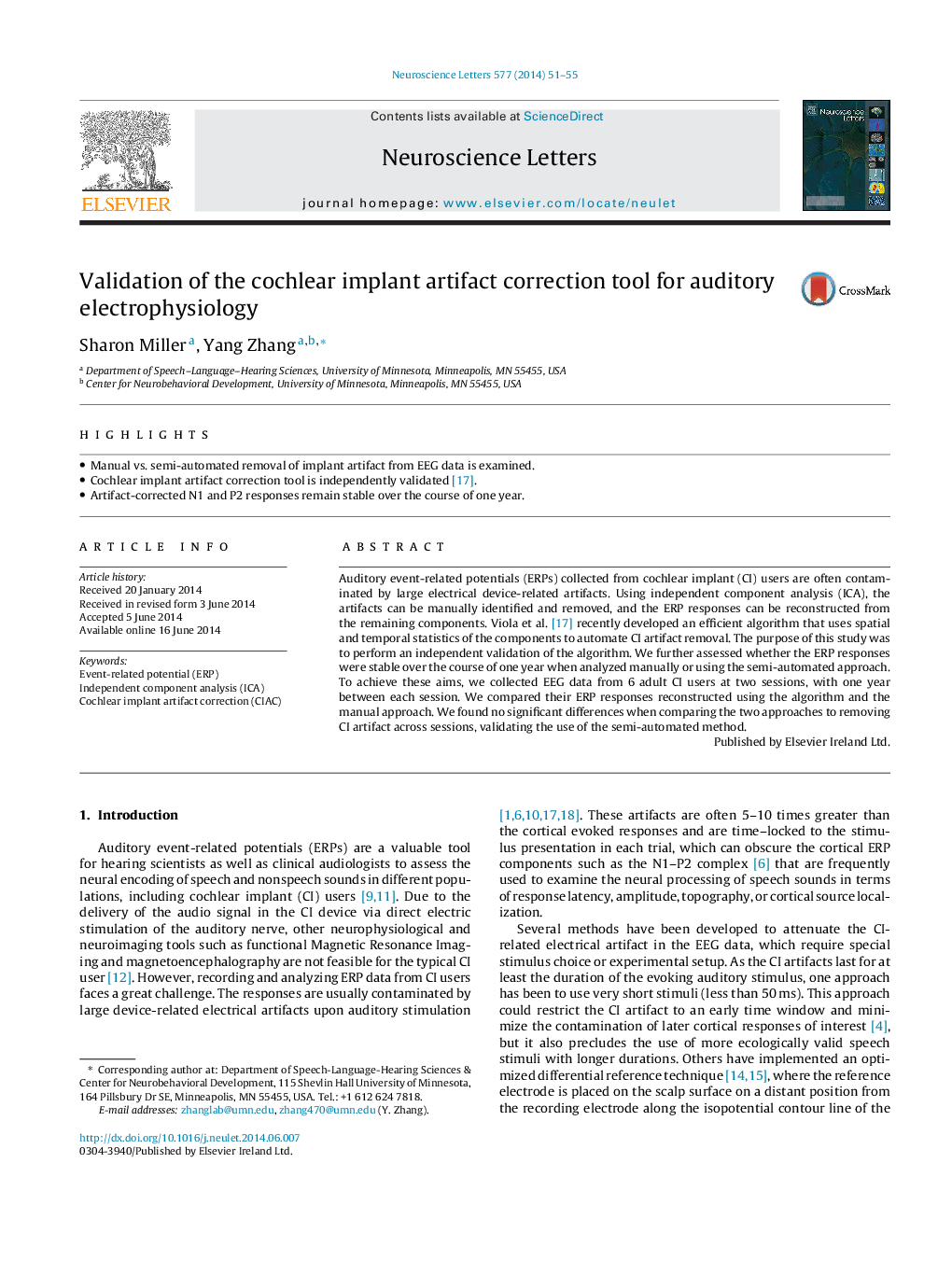| Article ID | Journal | Published Year | Pages | File Type |
|---|---|---|---|---|
| 4343698 | Neuroscience Letters | 2014 | 5 Pages |
•Manual vs. semi-automated removal of implant artifact from EEG data is examined.•Cochlear implant artifact correction tool is independently validated [17].•Artifact-corrected N1 and P2 responses remain stable over the course of one year.
Auditory event-related potentials (ERPs) collected from cochlear implant (CI) users are often contaminated by large electrical device-related artifacts. Using independent component analysis (ICA), the artifacts can be manually identified and removed, and the ERP responses can be reconstructed from the remaining components. Viola et al. [17] recently developed an efficient algorithm that uses spatial and temporal statistics of the components to automate CI artifact removal. The purpose of this study was to perform an independent validation of the algorithm. We further assessed whether the ERP responses were stable over the course of one year when analyzed manually or using the semi-automated approach. To achieve these aims, we collected EEG data from 6 adult CI users at two sessions, with one year between each session. We compared their ERP responses reconstructed using the algorithm and the manual approach. We found no significant differences when comparing the two approaches to removing CI artifact across sessions, validating the use of the semi-automated method.
